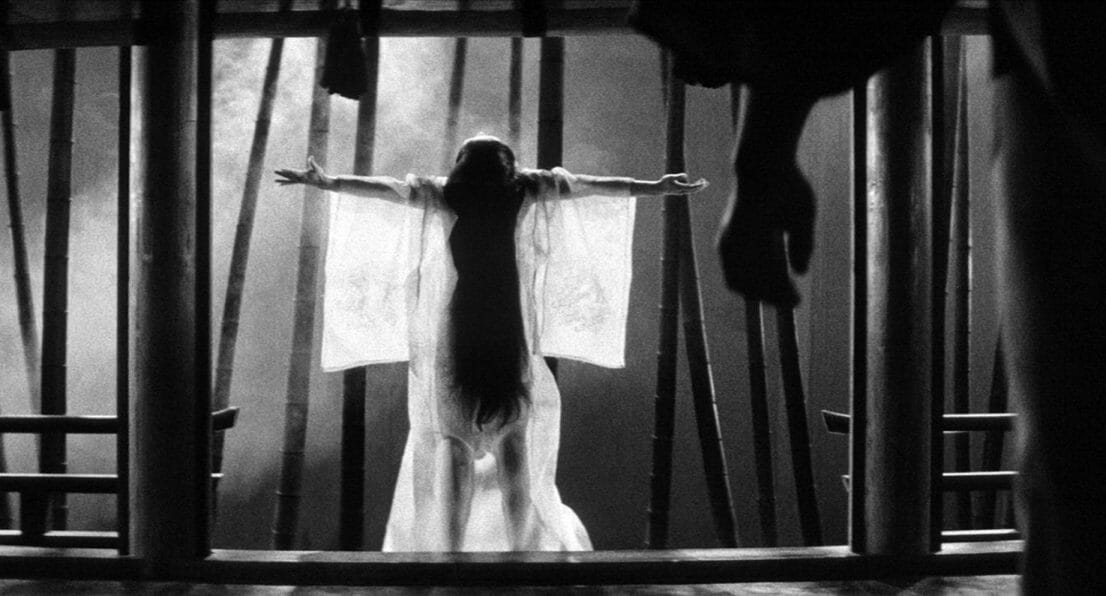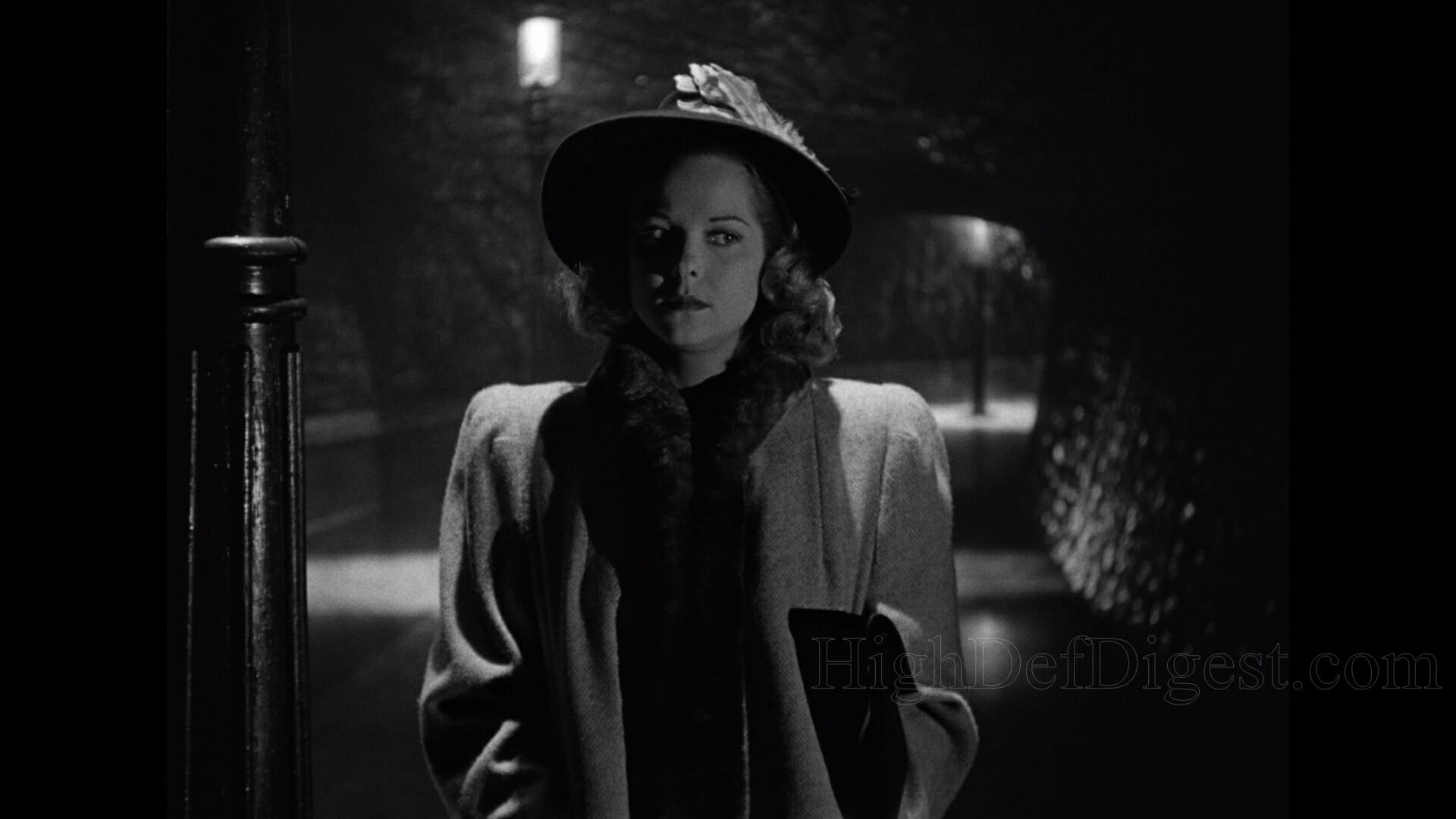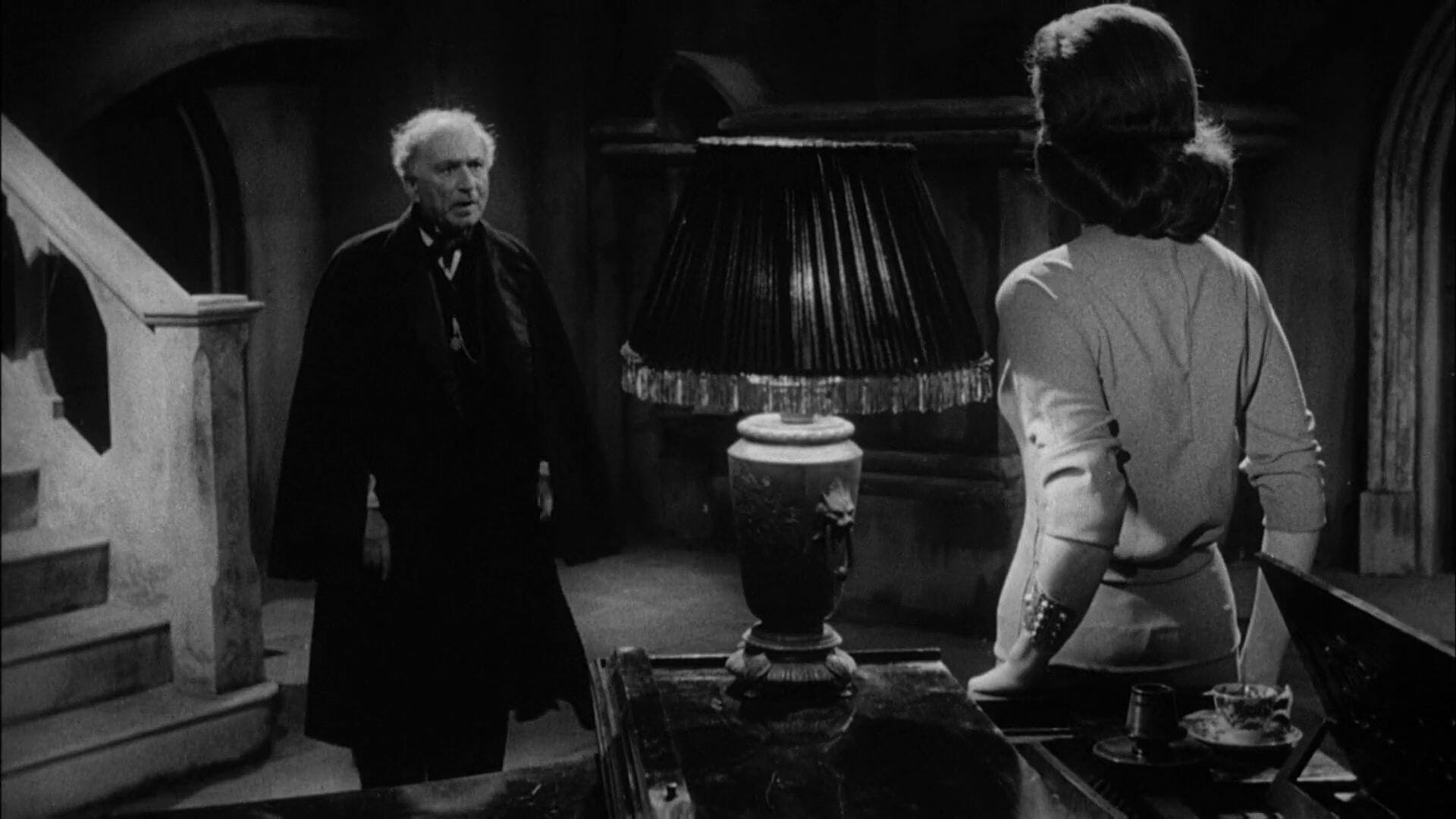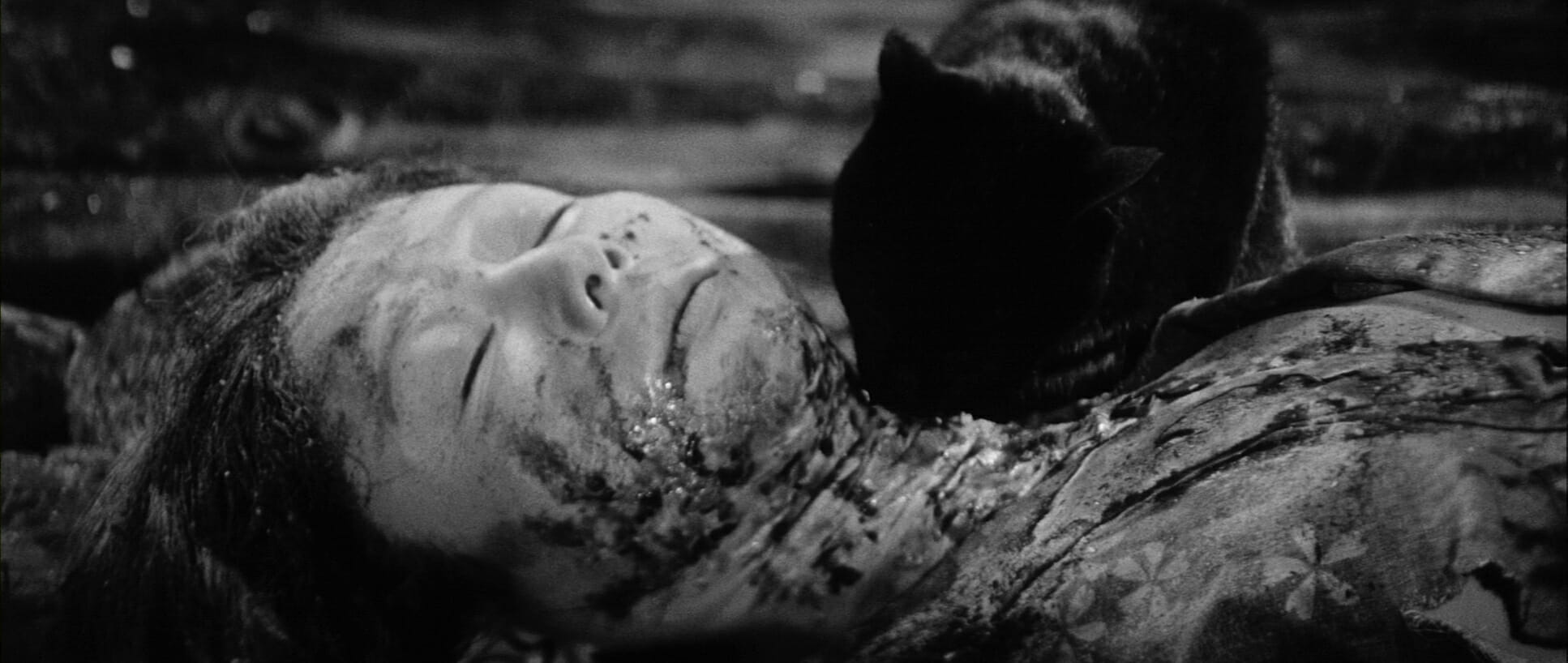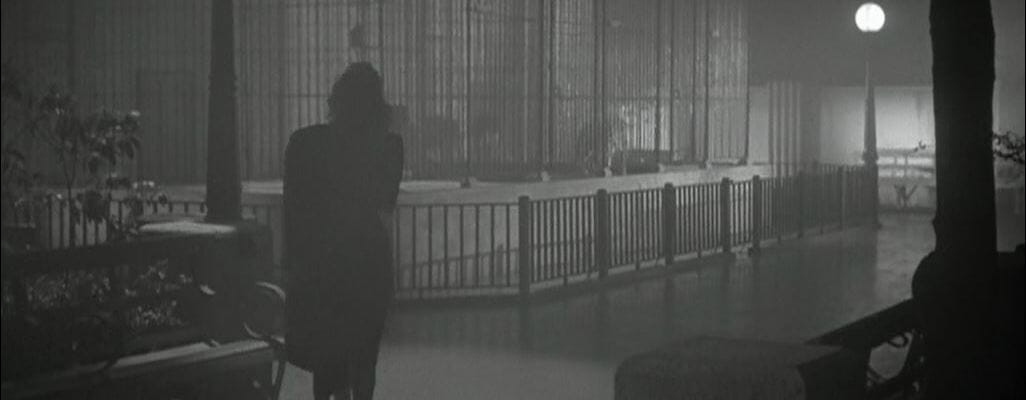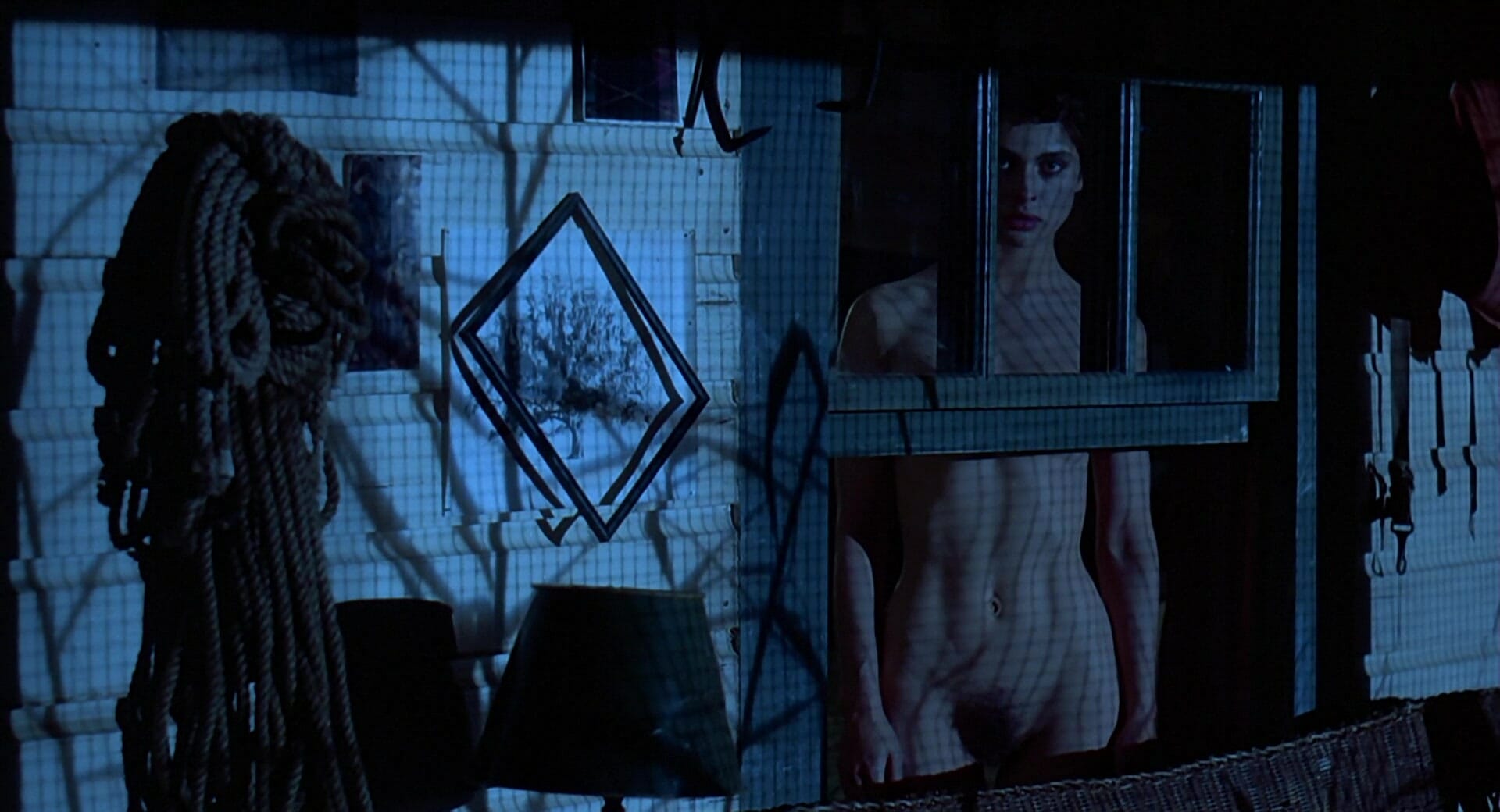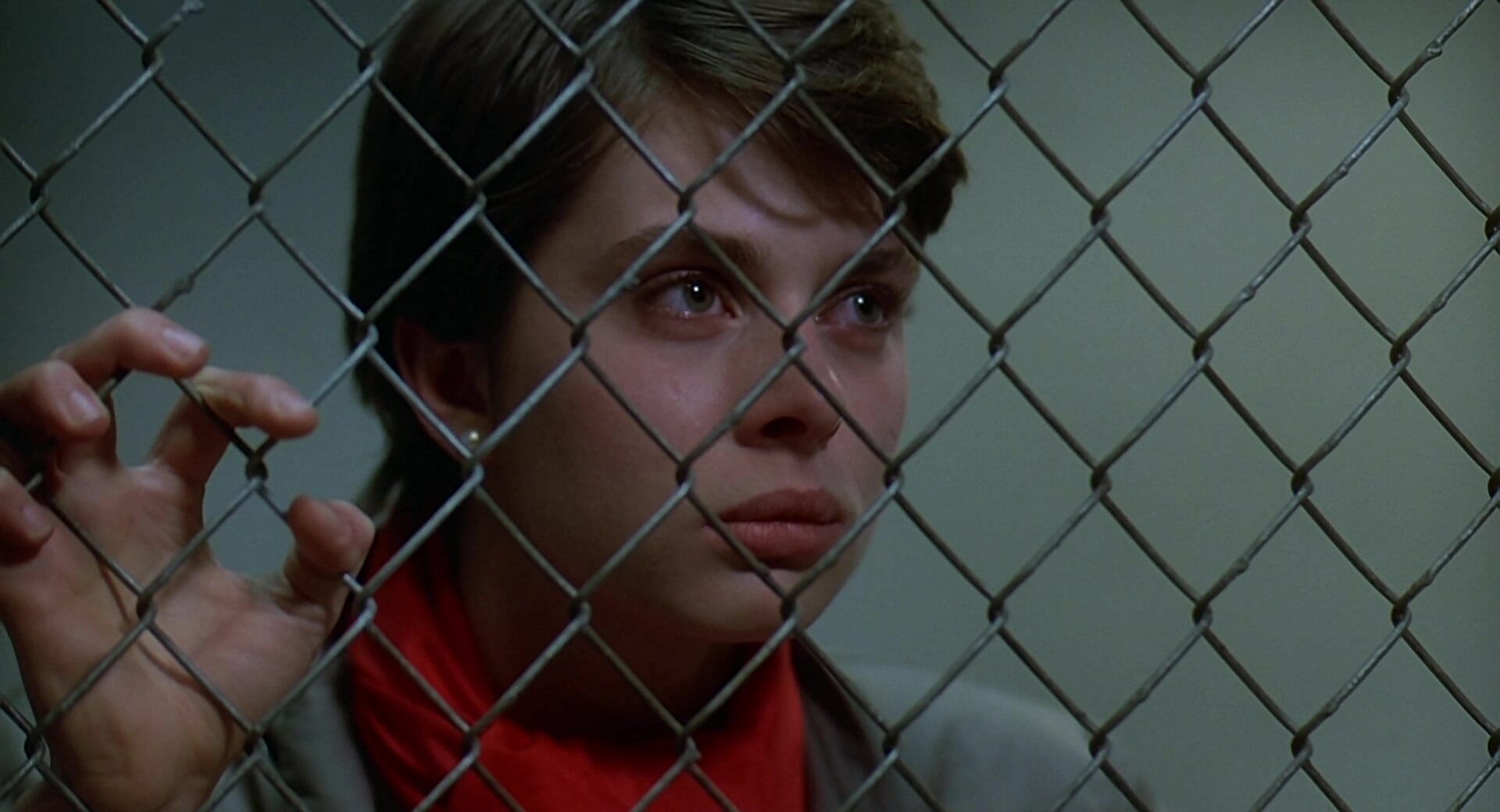In 1942, horror movie audiences were treated to what with some historical hindsight now seems clear as one of the greatest horror movies ever made, if not the very greatest: Cat People, from director Jacques Tourneur and producer Val Lewton, about an exotic young woman terrified of love (or, in less production-code-mandated-euphemistic language, sex) for fear that it will activate a centuries-old curse and transform her into a giant, bloodthirsty killer cat. The film has plenty of antecedents in literature and folklore, but in the film world it’s square one for a wide variety of films on the subject of women who turn into cats or cat/human hybrids and take either conscious or unconscious revenge on the men in their lives.
Cat People is, without hyperbole, likely the most visually accomplished horror film ever made. Tourneur is well known by horror and crime film fans for his creamy black-and-white nightmares, but he never surpassed the otherworldly beauty captured here. Cat People is a film about ancient terrors in an ultramodern environment, 20th century psychology and architecture being entirely inadequate to dealing with or even understanding them.
Analyzing Cat People has by this point been done practically to death. The film itself feels especially prone to psychological analysis, especially given that kind of analysis’s prominence within the storyline: Tom Conway plays Dr. Judd, a psychologist who hopes to cure Irena (Simone Simon) of her delusion (or is it?) that sexual passion will turn her into a murderous panther. Horror usually thrives on subtext, but in Cat People the subtext is so close to the surface that it occasionally bursts through, while still concealing plenty of meaning underneath. That might be why it’s so conducive to sequels, remakes, and other inspirations over the decades.
The first film to follow in Cat People’s wake was a sequel, Curse of the Cat People, which came out in 1944. Despite the title, the feline-sexual terror of the first film has mostly been replaced by hot chocolate, Washington Irving, and childhood loneliness, but even if it doesn’t exactly expand on the themes of the original movie it still makes a worthy companion to it. And, I should probably point out, it’s a Christmas movie!
Cat People was remade unofficially in 1957 in a joint British-American production from American-International Pictures and Anglo-Amalgamated. Somewhat amusingly by 21st century standards, the result is called Cat Girl, and it takes a somewhat more traditional approach to the same basic concept for a product that more closely resembles a traditional werewolf film. The word “lycanthrope” is even used to describe Barbara Shelley’s character, a violation of monster etymology that you wouldn’t likely see in a similar film today.
While Cat Girl is widely considered an unofficial remake of Cat People, it’s not a patch on the earlier film’s mastery of light and shadow, both in the visual and psychological senses. But the film’s familiar low-budget gothic atmosphere and its threat of a telepathic link between woman and beast are intriguing additions to the Cat People mythos.
For a Japanese angle on the idea of the supernatural feline femme fatale, consider director Kaneto Shindo’s Kuroneko from 1968. Of all the films mentioned here, this is the furthest from the Cat People template, and it’s not evident whether Shindo had seen or was influenced by Cat People at all. Based on an old Japanese folk tale, Kuroneko (Japanese for “Black Cat”) opens on a (literally and figuratively) haunting sequence of a mother and daughter-in-law being assaulted, murdered, and burned up with their home by a group of traveling samurai while the man of the house is away at war. The two come back as ghosts who seduce and then kill samurai for their ghostly revenge. Complications arise when the pair’s son/husband himself encounters the ghosts — complications so freudian that Kuroneko feels of a piece with Cat People even if it was never consciously intended as one. And wouldn’t it almost be too neat for a movie like Cat People to inspire imitators on an unconscious level, when so much of it deals with the unconscious mind?
But of course, freudian ghosts aren’t the only connection Kuroneko has to Cat People. As the title suggests, these ghosts manifest as increasingly catlike entities, eventually (and briefly) seen as a similar manner of cat/human hybrid seen in Cat Girl. These particular cat people aren’t motivated by sexual desire but a thirst for revenge, although the nature of that revenge does take on a seductive quality as they lure their hapless samurai victims to their deaths.
Shindo’s visual storytelling is at its best in the very beginning of Kuroneko, which takes more than ten minutes for any dialogue at all to occur. But even when the talking starts it remains a dreamlike and vaguely terrifying viewing experience that’s easily in the same class as Tourneur and Cat People.
Cat People was remade again, and officially this time, in 1982 by director Paul Schrader and producer Jerry Bruckheimer. The plot of the original film has been significantly altered, the mythology of the Cat People more detailed and complicated by the presence of Malcolm McDowell’s MALE cat person (and with new threads of incest and bondage that wouldn’t have been possible in the early 40s), and yet Schrader and co. seem haunted by it all the same. Some sequences are duplicated with surprising devotion, like the infamous fake-out bus scare and especially the nighttime swimming pool stalk, here in virtually the same form in which it appeared the first time. The effect of these scenes in the 1982 Cat People is like that of other similarly haunted remakes, like Werner Herzog’s take on Nosferatu or even Gus Van Sant’s Psycho, and Schrader finds deep resonance in the sex-and-death theme that probably wouldn’t come as a surprise to anyone familiar with his work and background.
The 80s Cat People has a lot to recommend it even apart from its connections to the original film. The special effects are gooey and disgusting in that peculiar 1980s way, and there’s a fantastic score by Giorgio Moroder, with its equally fantastic theme tune by David Bowie, used extremely memorably in Inglourious Basterds. Quentin Tarantino isn’t the only fan of the film out there, as the mystical dreamscape that serves as the spiritual home to the film’s cat people will look very familiar to anyone who remembers the “ancestral plane” from Marvel’s Black Panther.
Sexy lady werecats are a trope that extends far beyond the films mentioned here. There’s the various iterations of Batman’s nemesis Catwoman, not to mention all the half-woman, half-cats of horror fiction stretching back to the pre-cinema days, including Sheridan Le Fanu’s Camilla, in which the titular vampire is described as taking the form of a giant cat rather than the more modernly familiar wolf or bat.
Since it’s now been almost 40 years since the last official Cat People, we’re probably due for a new version — its mix of sexual subtext and horror might make it a good fit for the Blumhouse brand. Whoever does end up trying to take it on will have a pretty imposing cinematic tradition to try and honor. Then again, as Cat People demonstrates, there are some traditions that you can’t escape even if you want to.

